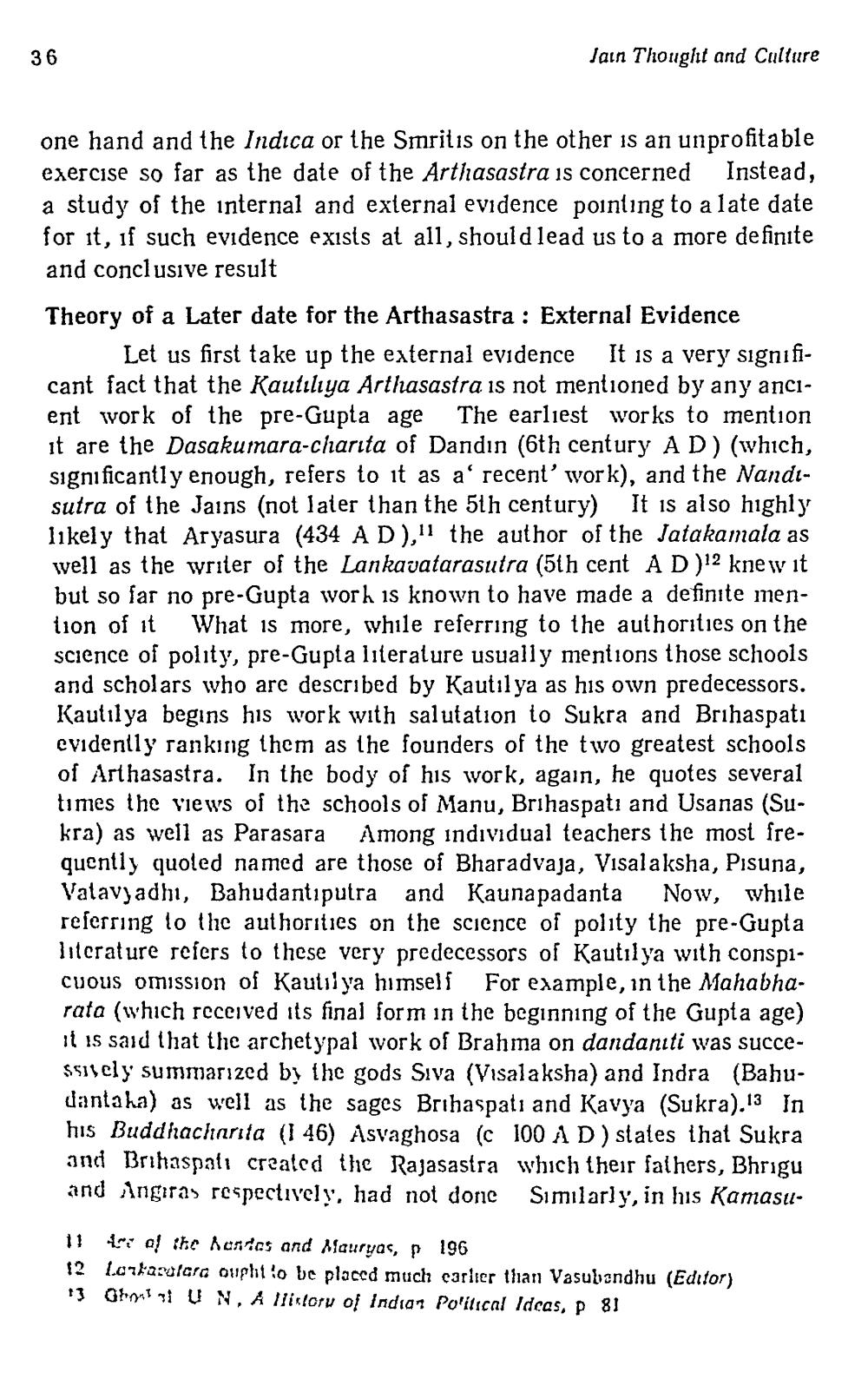________________
36
Jain Thought and Culture
one hand and the Indica or the Smritis on the other is an unprofitable exercise so far as the date of the Arthasastra is concerned Instead, a study of the internal and external evidence pointing to a late date for it, if such evidence exists at all, should lead us to a more definite and conclusive result Theory of a Later date for the Arthasastra : External Evidence
Let us first take up the external evidence It is a very significant fact that the Kautılıya Arthasastra is not mentioned by any ancient work of the pre-Gupta age The earliest works to mention it are the Dasakumara-charita of Dandin (6th century AD) (which, significantly enough, refers to it as a' recent' work), and the Nandisutra of the Jains (not later than the 5th century) It is also highly likely that Aryasura (434 AD)," the author of the Jatakamala as well as the writer of the Lankavatarasutra (5th cent AD)12 knew it but so far no pre-Gupta work is known to have made a definite mention of it What is more, while referring to the authorities on the science of polity, pre-Gupta literature usually mentions those schools and scholars who are described by Kautilya as his own predecessors. Kautilya begins his work with salutation to Sukra and Brihaspati evidently ranking them as the founders of the two greatest schools of Arthasastra. In the body of his work, again, he quotes several times the views of the schools of Manu, Brihaspati and Usanas (Sukra) as well as Parasara Among individual teachers the most frequently quoted named are those of Bharadvaja, Visalaksha, Pisuna, Vatavyadhi, Bahudantiputra and Kaunapadanta Now, while referring to the authorities on the science of polity the pre-Gupta literature refers to these very predecessors of Kautilya with conspicuous omission of Kautilya himself For example, in the Mahabharata (which received its final form in the beginning of the Gupta age) It is said that the archetypal work of Brahma on dandanıti was successively summarized by the gods Siva (Visalaksha) and Indra (Bahudantaha) as well as the sages Brihaspati and Kavya (Sukra).13 In his Buddhacharia (1 46) Asvaghosa (c 100 AD) states that Sukra and Brihaspalı created the Rajasastra which their fathers, Bhrigu and Ingiras respectively, had not donc Similarly, in his Raması
11 rol the honias and Mauryas, p 196 12 Lantacolara ought lo be placed much carlier than Vasubandhu (Editor) 13 Ghini U N , Allistory of Indian Political Ideas, P 81




